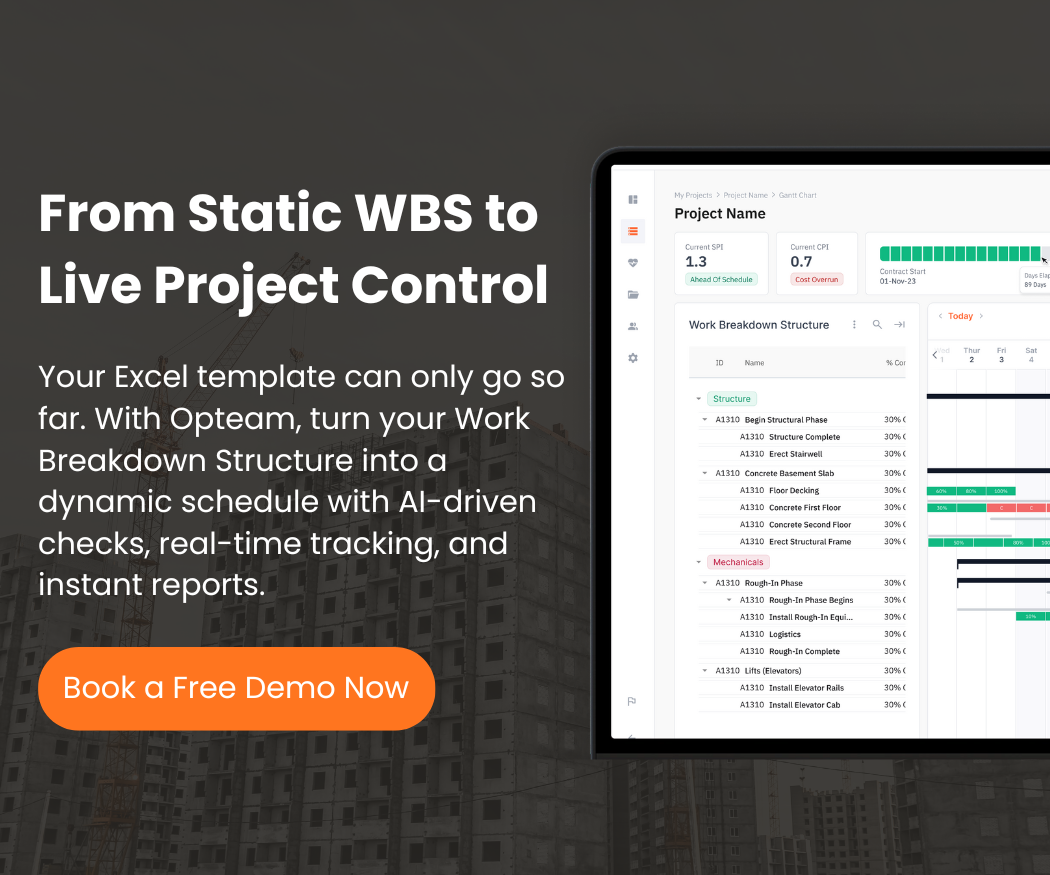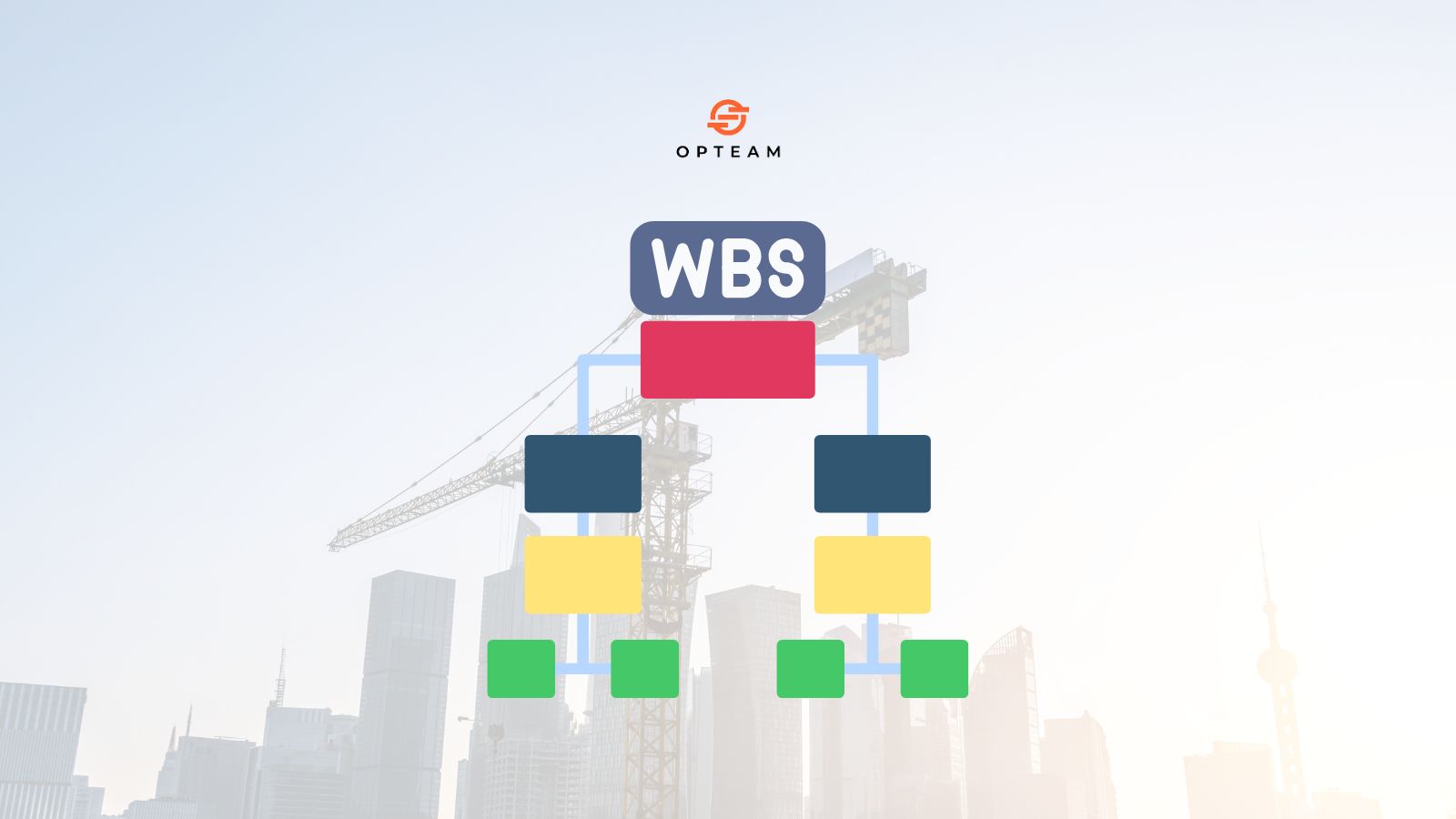A Work Breakdown Structure in construction is one of the most effective tools for organizing complex projects into manageable pieces. By breaking down a project into tasks, deliverables, and milestones, teams gain clarity on scope, responsibilities, and progress tracking.
This structured approach not only improves planning and resource allocation but also helps contractors, consultants, and project owners stay aligned from start to finish.
In this guide, we’ll explain what a Work Breakdown Structure (WBS) is, why it matters in construction projects, and provide a practical template you can use to build your own.
What is Work Breakdown Structure (WBS)?
A Work Breakdown Structure (WBS) is a project management tool that organizes a project into smaller, more manageable components. Instead of looking at a construction project as one massive task, the WBS breaks it down into hierarchical levels—starting with broad deliverables and narrowing down into specific tasks and work packages.
Each level provides more detail, helping project teams understand exactly what needs to be done, who is responsible, and how progress will be measured.
In construction, a WBS is especially valuable because projects often involve multiple trades, subcontractors, and complex schedules. By using a structured breakdown, project managers can allocate resources effectively, reduce confusion, and minimize the risk of overlooking critical tasks.
It also creates a clear framework for estimating costs, tracking progress, and reporting, making the WBS a cornerstone of successful project planning and execution.
Why WBS is Important in Construction Projects?
A Work Breakdown Structure (WBS) is critical in construction because it brings structure and clarity to projects that are often complex, large-scale, and involve many stakeholders.
By breaking the project into smaller, defined work packages, the WBS ensures that every task is accounted for and no scope elements are overlooked. This reduces ambiguity, improves coordination between contractors, consultants, and owners, and provides a clear roadmap for project execution.
Beyond clarity, the WBS also drives better control over time, cost, and quality. It allows project managers to assign responsibilities, allocate resources more accurately, and monitor progress against a structured baseline. In practice, this means fewer delays, improved communication across teams, and stronger alignment between planned and actual performance.
In short, the WBS acts as both a planning tool and a management tool, making it essential for keeping construction projects on track.

Key Elements of a Construction Work Breakdown Structure
A good WBS in construction isn’t just a list of tasks—it’s a structured hierarchy. To make it effective, several elements need to be included:
- Project Scope – the overall deliverable that defines the boundaries of the project.
- Levels of Breakdown – from high-level deliverables (e.g., foundation, superstructure, finishes) down to specific tasks and work packages.
- Work Packages – the smallest manageable units of work that can be scheduled, costed, and assigned.
- Unique Codes or Numbering – helps categorize and track tasks in project management systems.
- Dependencies and Sequencing – showing how tasks relate to each other and what must be completed first.
Together, these elements create a clear framework that connects the big picture to the daily activities on-site.
How to Create a Work Breakdown Structure Step by Step
Creating a WBS for a construction project involves a logical flow. Here’s a simple process you can follow:
- Define the scope and objectives – clarify what the project must deliver.
- Break down major deliverables – start with big categories like site preparation, structure, MEP works, and finishes.
- Decompose further – divide each deliverable into smaller, manageable tasks.
- Organize hierarchically – use a tree diagram or outline format to visualize relationships.
- Assign codes and responsibilities – ensure every package has an owner and tracking system.
- Validate with stakeholders – review to confirm nothing critical is missing.
Following these steps ensures your WBS is complete, realistic, and aligned with how the project will actually be built.
Work Breakdown Structure Example for a Construction Project
To see how this works in practice, imagine a mid-rise building project. A simplified WBS might look like this:
Level 1 – Building Project
Level 2 – Foundation
Excavation
Reinforcement
Concrete pouring
Level 2 – Superstructure
Columns and beams
Slabs
Level 2 – Finishes
Masonry
Plastering
Painting
This hierarchy can be expanded further for more detail, but even at this level, it provides structure and a shared understanding of project scope.

Common Mistakes to Avoid When Building a WBS
Even though a WBS is simple in concept, many teams stumble during execution. Some common pitfalls include:
- Too much detail – breaking the project into tasks so granular that the WBS looks like a to-do list instead of a structured hierarchy.
- Too little detail – staying at a high level and skipping critical deliverables, which leads to scope gaps later.
- Mixing deliverables with activities – a WBS should focus on what will be delivered, not the exact process of how.
- Inconsistent levels – having some branches with deep detail and others left vague, which makes planning uneven.
- Not involving the right stakeholders – a WBS built in isolation risks missing important perspectives, especially from site teams and consultants.
Final Thoughts on WBS in Construction
A Work Breakdown Structure is more than just a chart — it’s the foundation of effective planning and communication in construction. By breaking down complex projects into manageable deliverables, teams can align on scope, avoid surprises, and monitor progress with confidence.
When done right, a WBS isn’t just paperwork; it’s a tool that keeps projects on time, on budget, and on scope.


